Wiggsy
Contributor
Hello all Scubaboarders - what follows is an article I've written for an Australian dive magazine on a recent trip aboard The Nautilus 2, one of the larger liveaboards in The Maldives.
The Maldives the very name conjures up visions of tiny islands sprinkled across an emerald ocean, white powder sand beaches rimmed with coconut palms and offshore aquamarine coral reefs. Abundant fish, warm clear waters and endless dives sites are all part of the allure. And the vision is not far wrong. It is a unique, magical place with something for every diver.
I led a group of 24 aboard the Austrian-owned Nautilus 2 liveaboard on a September SCUBA safari around the various atolls of the tourist region adjacent to Male. North and South Male, Felidhu and Ari Atolls were the location for 16 dives over a 7 day safari, plus an amazing session snorkelling with a Whale Shark. This was our third trip to The Maldives, and despite less than ideal conditions, some of the dives were, well epic. Not surprising really. The Maldives probably has more kilometres of coral reef per head of population than just about anywhere else on earth, and its relative isolation and low fishing pressure ensures its continued sustainability well, at least for now. Most of the islands are only a metre or so above sea level, and with the highest point in the entire island nation under 3 metres, sea level rise will catch up with The Maldives sooner rather than later.
Liveaboard safaris, in my humble opinion, offer the best and most affordable way to dive The Maldives. For the much the same day rate as full board accommodation only at a modest resort, you can enjoy three dives a day on board the Nautilus 2, all the while covering a lot of dive territory to boot. And waking up to a stunning new horizon each morning is only one of the added benefits. There are more than 80 liveaboards in The Maldives so the competition is high and the rates reasonable, particularly in the low season the value per dive is hard to beat and the service offered is impeccable. The Maldives is one of the only destinations I know of where a liveaboard dive cruise entails not one, but two vessels - one to live on and one to dive from. The Nautilus 2 is a 43 metre wooden traditional vessel on a 13 metre beam, meaning she is one of the largest liveaboards in The Maldives. With 13 cabins, she welcomes 24 guests on board with spacious style not as glitzy and glamorous as some of the sparkling white three deck ships but blessed with way more room and stability than most. And tagging along for the journey is the Dheriyaa, a beamy 23 metre dive dhoni where all stuff related to diving remains for the trip. This organised and efficient dive platform swallows 24 divers with ease. This is what sets Maldives liveaboards apart instead of over 1/3 of the upper deck being taken over by dive operations, we spread out over the entire liveaboard while our smelly wetsuits and snakey regulators hung up in the dive dhoni.
The Nautilus 2 caters almost exclusively for the German, Swiss and Austrian market, indeed we were the first Australian group on board. Austrian dive guide Peter (Petzi) and his Maldivian counterpart Ally were possibly a little out of their comfort zone at first, but they soon adapted to our sense of humour and embraced the many true stories about Funnel Webs; Drop Bears; Taipans; Crocodiles and White Pointers! Dives start really early in the day (wakeup call 6:00 - 6:30 am typically) with detailed briefings given in the Nautilus spacious and comfortable lounge. The early start might not be popular, but it allows time to fill tanks between dives and motor to yet another idyllic reef off some superb island. And with three dives each day a long surface interval is certainly of benefit. Our trip coincided with a full moon though, and this means one thing in The Maldives big currents and king tides some villages were sandbagging important installations while we were there. Tides are crucial to all Maldives dive sites obviously it is the current that brings the nutrients. The incoming tide is preferred due to clearer water and more fish action, with sharks being prevalent on the passage entrances. Occasionally, dive sites were rendered a little risky by strong currents and a planned dive at Manta Point was aborted due to an unstoppable ripping express ride along the reef wall. No matter we dived with four of these magnificent creatures at Enmadi giri in South Male, watching them feed over the top of the giri. We were riveted by their slow-mo grace and beauty as they wheeled overhead.
Maldivian dive sites fall into three categories there are the thilas, or pinnacle dives where the reef rises to not less than five metres from the surface; the giris where the reef top is shallow and less than 5 metres deep; and the kandus or reef passes where the ocean cuts into the lagoons. Each offer their own challenge, though currents often proved fickle and hard to predict. There are 26 separate atolls in this island nation, 1,192 islets and only 1% of the entire nation is actually land! It literally is a waterworld. And as one leaves Male behind the dive sites become increasingly adventurous and unpronounceable - names such as Dhevana Kandu are or Biyadhoo Giri are way more likely that the ubiquitous Butterfly bommie!
There is also the occasional wreck and jetty dive. One glorious evening we headed to Alimatha jetty for a night dive - with a twist. I had been a little concerned that a few of my group had zero night diving experience, but Petzi allayed my fears. He explained that this was to be a very simple night dive, where the group would merely assemble on the sand bottom at eight metres or so and wait for the show to start, as he put it, grinning broadly. Each night a procession of Tawny Nurse Sharks (masses of them) converge on the resort jetty for a feed of fish bits. Petzi prepared us well emphasising just how many we could encounter, but noone expected a veritable wall of sharks to surround us, looming large in the torchlight it would have been pointless trying to count them as they circled in layers from the surface to the bottom cruising casually between awestruck divers. Peter had emphasised the harmless nature of the beasties but they were impressive nonetheless with dozens of them well over two metres. Giant Trevally, large nosy Rays and Bluefin Trevally also joined in the action, poking around bommies looking for fish scraps or unwary critters, like the unfortunate octopus that broke camouflage at just the wrong moment. The action was unbelievable, the experience unforgettable and yet this was simultaneously the easiest and possibly the best night dive wed ever done.
The Maldives has a reputation for big critters and thus my macro lens stayed locked away in the camera case. Speaking of big, we not only snorkelled with a seven metre Whale Shark at Ari Atoll but also scuba dived with a large adult later that same day. The Maldives is one destination where you can realistically expect to see Whale Sharks and Mantas on a week-long liveaboard journey they are a year round proposition. The fish life was insane - every dive involved schools of large Trevally and occasionally impressive predators such as Dogtooth Tuna or the swift Spanish Mackerel. The Dogtooth Tuna commanded respect even the Grey Reef Whalers backed off when the Doggies were hitting the schools of Fusiliers. Much more sedate were the gorgeous Napoleon Wrasse and Turtles seen on a few dives.
For sheer volume, the massive schools of Fusiliers and Basslets on top of the thilas are hard to beat. But even they were outnumbered by an animated confetti of thousands of Red Toothed Triggerfish which twitched over the reef walls while Vlamings Unicornfish spiralled in delight in our bubble streams these fish seriously enjoy a spa! Hard corals are abundant (actually the whole nation is hard coral!) though there is evidence at some sites of damage from bleaching events of the past decades. But I had memories from my last trip of rainbowed veils of soft corals, so Petzi took us to his favourite dive site Radhiga Thila in South Ari Atoll. This thila is undercut with massive ledges filled with white; pastel pink and apricot soft corals. Petzi explained they looked like edleweiss (which prompted a raucous sing song from The Sound of Music!) There was only a hint of current so the edelweiss softies werent fully inflated but were impressive nonetheless - the many Blue Faced Angels and Oriental Sweetlips seemed to enjoy posing in front of suitably complimentary backgrounds. The fish at this site were generally placid and easy to photograph. This dive was an absolute riot of colour and would rank very high on my list of top dives. I tend to agree with Petzi!
The last dive of our safari was at Hafsa Thila which really got the heart pumping with constant shark action off the crest of the thila. White tips and Grey Reefies edged unusually close while we were enveloped in schools of Blue and Gold Fusiliers. A restless curtain of Red Tooth Triggers provided a moving purple backdrop in the dull early morning light. Something flashed by overhead the fat torpedoes of prowling Dogtooth Tuna. A few seconds later, an audible crack was heard and the schools of baitfish parted in an instant as the Doggies struck. Another great dive and a fitting end to a wonderful journey.
WHAT IS THE BEST TIME OF THE YEAR FOR DIVING THE MALDIVES?
The Maldives offers good diving all year round. Typically June and July have the strongest wind -some vessels take these months off for dry dock. One can split the year into the 2 seasons:
May to November: South West Monsoon
· Wind from the South West and current from the West (all the way from Africa).
· Best Places to Dive: Ari Atoll, North Male Atoll. Mantas (East Ari, and Eastern side of Male Atolls), Whalesharks (South Ari)
· Clean Oceanic water comes in from the west with the current. This means the visibility on Ari Atoll is best in this period. The water temp is a tad lower which results in sharks coming up a bit shallower. The pinnacles of Ari Atoll are great in this time.
· Weather: More overcast so therefore less normal tourists, means less crowded dive sites. The South West Monsoon offers good conditions for new divers as the currents are weaker with a good chance of seeing Mantas and Whalesharks.
December to April: North East Monsoon
· Breezes from the north east (some protection from India and Sri Lanka). Much calmer conditions.
· Current from the East (from Sumatra). Diving is good everywhere, however visibility is best on the Eastern side, where the traditional Maldivian kandu dives will take place to see Grey Reefies and Eagle rays.
· Ari is where the Mantas and Whalesharks will be found as the current pushes through from the east picking up the plankton - the big lazy Mantas sit on the opposite side with their mouths open being fed by the current. January to March has very strong currents around New and Full moon, with January new moon having the strongest current of the year. January to April are best for sun-worshippers!
Lastly, it was so good I booked it straight away again for September 2016. I have 1/2 dozen vacancies still of folks are interested. Trip leaves Melbourne, Australia, but can easily just meet you there!
The Maldives the very name conjures up visions of tiny islands sprinkled across an emerald ocean, white powder sand beaches rimmed with coconut palms and offshore aquamarine coral reefs. Abundant fish, warm clear waters and endless dives sites are all part of the allure. And the vision is not far wrong. It is a unique, magical place with something for every diver.
I led a group of 24 aboard the Austrian-owned Nautilus 2 liveaboard on a September SCUBA safari around the various atolls of the tourist region adjacent to Male. North and South Male, Felidhu and Ari Atolls were the location for 16 dives over a 7 day safari, plus an amazing session snorkelling with a Whale Shark. This was our third trip to The Maldives, and despite less than ideal conditions, some of the dives were, well epic. Not surprising really. The Maldives probably has more kilometres of coral reef per head of population than just about anywhere else on earth, and its relative isolation and low fishing pressure ensures its continued sustainability well, at least for now. Most of the islands are only a metre or so above sea level, and with the highest point in the entire island nation under 3 metres, sea level rise will catch up with The Maldives sooner rather than later.
Liveaboard safaris, in my humble opinion, offer the best and most affordable way to dive The Maldives. For the much the same day rate as full board accommodation only at a modest resort, you can enjoy three dives a day on board the Nautilus 2, all the while covering a lot of dive territory to boot. And waking up to a stunning new horizon each morning is only one of the added benefits. There are more than 80 liveaboards in The Maldives so the competition is high and the rates reasonable, particularly in the low season the value per dive is hard to beat and the service offered is impeccable. The Maldives is one of the only destinations I know of where a liveaboard dive cruise entails not one, but two vessels - one to live on and one to dive from. The Nautilus 2 is a 43 metre wooden traditional vessel on a 13 metre beam, meaning she is one of the largest liveaboards in The Maldives. With 13 cabins, she welcomes 24 guests on board with spacious style not as glitzy and glamorous as some of the sparkling white three deck ships but blessed with way more room and stability than most. And tagging along for the journey is the Dheriyaa, a beamy 23 metre dive dhoni where all stuff related to diving remains for the trip. This organised and efficient dive platform swallows 24 divers with ease. This is what sets Maldives liveaboards apart instead of over 1/3 of the upper deck being taken over by dive operations, we spread out over the entire liveaboard while our smelly wetsuits and snakey regulators hung up in the dive dhoni.
The Nautilus 2 caters almost exclusively for the German, Swiss and Austrian market, indeed we were the first Australian group on board. Austrian dive guide Peter (Petzi) and his Maldivian counterpart Ally were possibly a little out of their comfort zone at first, but they soon adapted to our sense of humour and embraced the many true stories about Funnel Webs; Drop Bears; Taipans; Crocodiles and White Pointers! Dives start really early in the day (wakeup call 6:00 - 6:30 am typically) with detailed briefings given in the Nautilus spacious and comfortable lounge. The early start might not be popular, but it allows time to fill tanks between dives and motor to yet another idyllic reef off some superb island. And with three dives each day a long surface interval is certainly of benefit. Our trip coincided with a full moon though, and this means one thing in The Maldives big currents and king tides some villages were sandbagging important installations while we were there. Tides are crucial to all Maldives dive sites obviously it is the current that brings the nutrients. The incoming tide is preferred due to clearer water and more fish action, with sharks being prevalent on the passage entrances. Occasionally, dive sites were rendered a little risky by strong currents and a planned dive at Manta Point was aborted due to an unstoppable ripping express ride along the reef wall. No matter we dived with four of these magnificent creatures at Enmadi giri in South Male, watching them feed over the top of the giri. We were riveted by their slow-mo grace and beauty as they wheeled overhead.
Maldivian dive sites fall into three categories there are the thilas, or pinnacle dives where the reef rises to not less than five metres from the surface; the giris where the reef top is shallow and less than 5 metres deep; and the kandus or reef passes where the ocean cuts into the lagoons. Each offer their own challenge, though currents often proved fickle and hard to predict. There are 26 separate atolls in this island nation, 1,192 islets and only 1% of the entire nation is actually land! It literally is a waterworld. And as one leaves Male behind the dive sites become increasingly adventurous and unpronounceable - names such as Dhevana Kandu are or Biyadhoo Giri are way more likely that the ubiquitous Butterfly bommie!
There is also the occasional wreck and jetty dive. One glorious evening we headed to Alimatha jetty for a night dive - with a twist. I had been a little concerned that a few of my group had zero night diving experience, but Petzi allayed my fears. He explained that this was to be a very simple night dive, where the group would merely assemble on the sand bottom at eight metres or so and wait for the show to start, as he put it, grinning broadly. Each night a procession of Tawny Nurse Sharks (masses of them) converge on the resort jetty for a feed of fish bits. Petzi prepared us well emphasising just how many we could encounter, but noone expected a veritable wall of sharks to surround us, looming large in the torchlight it would have been pointless trying to count them as they circled in layers from the surface to the bottom cruising casually between awestruck divers. Peter had emphasised the harmless nature of the beasties but they were impressive nonetheless with dozens of them well over two metres. Giant Trevally, large nosy Rays and Bluefin Trevally also joined in the action, poking around bommies looking for fish scraps or unwary critters, like the unfortunate octopus that broke camouflage at just the wrong moment. The action was unbelievable, the experience unforgettable and yet this was simultaneously the easiest and possibly the best night dive wed ever done.
The Maldives has a reputation for big critters and thus my macro lens stayed locked away in the camera case. Speaking of big, we not only snorkelled with a seven metre Whale Shark at Ari Atoll but also scuba dived with a large adult later that same day. The Maldives is one destination where you can realistically expect to see Whale Sharks and Mantas on a week-long liveaboard journey they are a year round proposition. The fish life was insane - every dive involved schools of large Trevally and occasionally impressive predators such as Dogtooth Tuna or the swift Spanish Mackerel. The Dogtooth Tuna commanded respect even the Grey Reef Whalers backed off when the Doggies were hitting the schools of Fusiliers. Much more sedate were the gorgeous Napoleon Wrasse and Turtles seen on a few dives.
For sheer volume, the massive schools of Fusiliers and Basslets on top of the thilas are hard to beat. But even they were outnumbered by an animated confetti of thousands of Red Toothed Triggerfish which twitched over the reef walls while Vlamings Unicornfish spiralled in delight in our bubble streams these fish seriously enjoy a spa! Hard corals are abundant (actually the whole nation is hard coral!) though there is evidence at some sites of damage from bleaching events of the past decades. But I had memories from my last trip of rainbowed veils of soft corals, so Petzi took us to his favourite dive site Radhiga Thila in South Ari Atoll. This thila is undercut with massive ledges filled with white; pastel pink and apricot soft corals. Petzi explained they looked like edleweiss (which prompted a raucous sing song from The Sound of Music!) There was only a hint of current so the edelweiss softies werent fully inflated but were impressive nonetheless - the many Blue Faced Angels and Oriental Sweetlips seemed to enjoy posing in front of suitably complimentary backgrounds. The fish at this site were generally placid and easy to photograph. This dive was an absolute riot of colour and would rank very high on my list of top dives. I tend to agree with Petzi!
The last dive of our safari was at Hafsa Thila which really got the heart pumping with constant shark action off the crest of the thila. White tips and Grey Reefies edged unusually close while we were enveloped in schools of Blue and Gold Fusiliers. A restless curtain of Red Tooth Triggers provided a moving purple backdrop in the dull early morning light. Something flashed by overhead the fat torpedoes of prowling Dogtooth Tuna. A few seconds later, an audible crack was heard and the schools of baitfish parted in an instant as the Doggies struck. Another great dive and a fitting end to a wonderful journey.
WHAT IS THE BEST TIME OF THE YEAR FOR DIVING THE MALDIVES?
The Maldives offers good diving all year round. Typically June and July have the strongest wind -some vessels take these months off for dry dock. One can split the year into the 2 seasons:
May to November: South West Monsoon
· Wind from the South West and current from the West (all the way from Africa).
· Best Places to Dive: Ari Atoll, North Male Atoll. Mantas (East Ari, and Eastern side of Male Atolls), Whalesharks (South Ari)
· Clean Oceanic water comes in from the west with the current. This means the visibility on Ari Atoll is best in this period. The water temp is a tad lower which results in sharks coming up a bit shallower. The pinnacles of Ari Atoll are great in this time.
· Weather: More overcast so therefore less normal tourists, means less crowded dive sites. The South West Monsoon offers good conditions for new divers as the currents are weaker with a good chance of seeing Mantas and Whalesharks.
December to April: North East Monsoon
· Breezes from the north east (some protection from India and Sri Lanka). Much calmer conditions.
· Current from the East (from Sumatra). Diving is good everywhere, however visibility is best on the Eastern side, where the traditional Maldivian kandu dives will take place to see Grey Reefies and Eagle rays.
· Ari is where the Mantas and Whalesharks will be found as the current pushes through from the east picking up the plankton - the big lazy Mantas sit on the opposite side with their mouths open being fed by the current. January to March has very strong currents around New and Full moon, with January new moon having the strongest current of the year. January to April are best for sun-worshippers!
Lastly, it was so good I booked it straight away again for September 2016. I have 1/2 dozen vacancies still of folks are interested. Trip leaves Melbourne, Australia, but can easily just meet you there!
Attachments
-
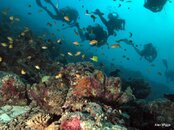 P1013630.jpg52.1 KB · Views: 178
P1013630.jpg52.1 KB · Views: 178 -
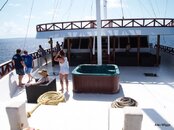 P1013653.jpg41.9 KB · Views: 170
P1013653.jpg41.9 KB · Views: 170 -
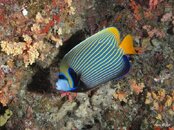 P1013864.jpg73.9 KB · Views: 157
P1013864.jpg73.9 KB · Views: 157 -
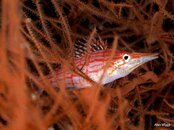 P1013938.jpg40.9 KB · Views: 152
P1013938.jpg40.9 KB · Views: 152 -
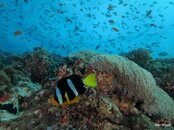 P1013962 (Medium) (Medium).jpg48.1 KB · Views: 154
P1013962 (Medium) (Medium).jpg48.1 KB · Views: 154 -
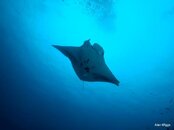 P9253246 (Medium).jpg13.9 KB · Views: 157
P9253246 (Medium).jpg13.9 KB · Views: 157 -
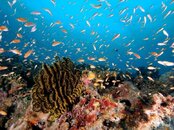 P9253313 (Medium).jpg68 KB · Views: 148
P9253313 (Medium).jpg68 KB · Views: 148 -
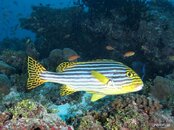 P9253352.jpg57.2 KB · Views: 172
P9253352.jpg57.2 KB · Views: 172 -
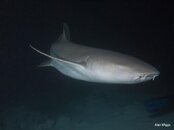 P9263565 (Medium).jpg12.2 KB · Views: 138
P9263565 (Medium).jpg12.2 KB · Views: 138 -
 P9294003 (Medium).jpg13.7 KB · Views: 147
P9294003 (Medium).jpg13.7 KB · Views: 147 -
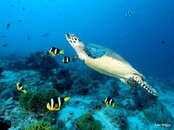 P9294010 (Medium).jpg39.9 KB · Views: 144
P9294010 (Medium).jpg39.9 KB · Views: 144 -
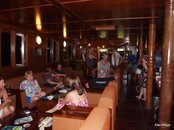 P9294056 (Medium).jpg41.9 KB · Views: 147
P9294056 (Medium).jpg41.9 KB · Views: 147 -
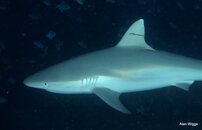 P9304090 (Medium).jpg14.2 KB · Views: 141
P9304090 (Medium).jpg14.2 KB · Views: 141 -
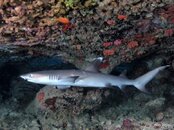 P9304162 (Medium).jpg57.1 KB · Views: 160
P9304162 (Medium).jpg57.1 KB · Views: 160 -
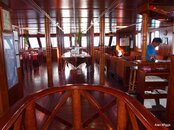 PA014181 (Medium).jpg52.2 KB · Views: 162
PA014181 (Medium).jpg52.2 KB · Views: 162 -
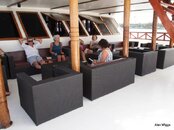 PA014183 (Medium).jpg38.7 KB · Views: 158
PA014183 (Medium).jpg38.7 KB · Views: 158 -
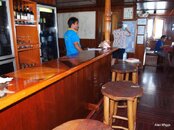 PA014189 (Medium).jpg45.9 KB · Views: 146
PA014189 (Medium).jpg45.9 KB · Views: 146 -
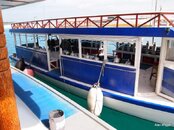 PA014192 (Medium).jpg49.8 KB · Views: 164
PA014192 (Medium).jpg49.8 KB · Views: 164 -
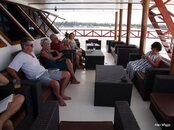 PA014196 (Medium).jpg44.9 KB · Views: 142
PA014196 (Medium).jpg44.9 KB · Views: 142 -
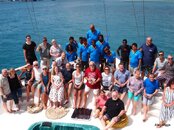 PA014202 (Medium).jpg60.4 KB · Views: 158
PA014202 (Medium).jpg60.4 KB · Views: 158




